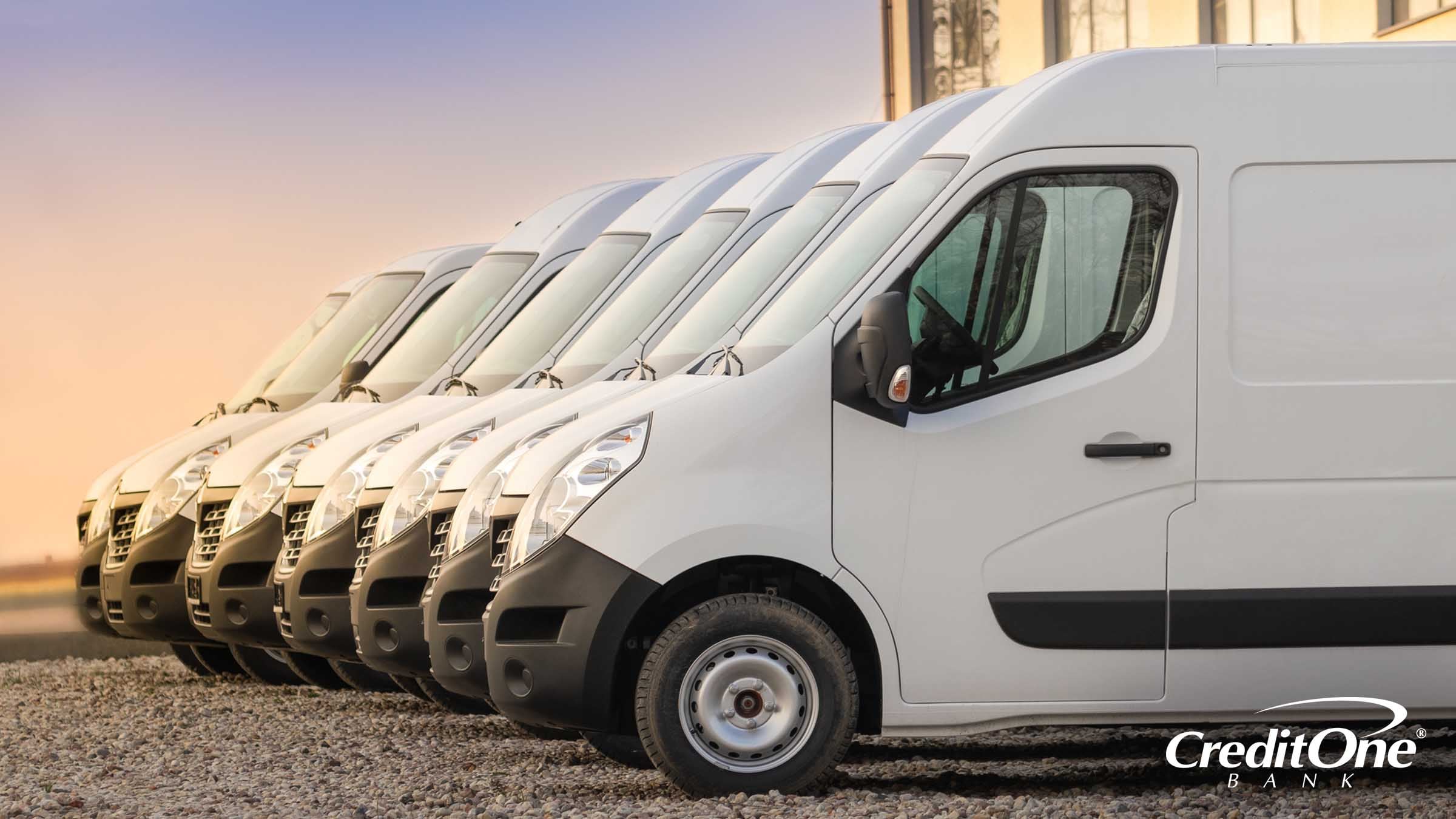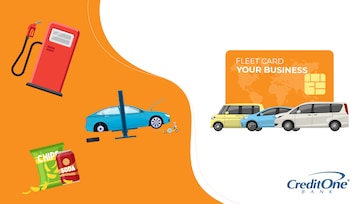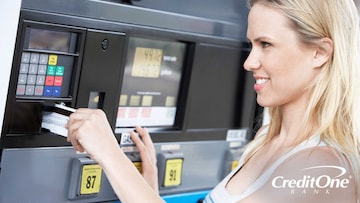Ever since internal-combustion-engine vehicles started being used for business, business owners have pondered the best way to keep their vehicles fueled and on the road. Should they use cash, which requires supplying drivers with money upfront? Or have them pay out-of-pocket and reimburse them later, after they’ve submitted expense reports and receipts? Should they invest in on-site fueling, which requires a significant outlay of capital and really only makes sense for companies with larger fleets of vehicles? Or should they use company credit cards, which can be used to purchase most anything, including items companies don’t want their drivers buying?
Depending on the circumstances of your business and the size of your vehicle fleet, the answer may be none of the above.
The right choice for your business could just be a fleet card, also referred to as a “fuel card” or even a “fleet fuel card.” No matter what you call it, a fleet card may be the right choice to offer the convenience, control, and security you need to keep your corporate vehicles—and your business—moving.
What a Fleet Card Is & What it Is Not
A fleet card is essentially a payment card used for fuel purchases for a fleet of corporate vehicles. A “fleet” of vehicles may sound like a lot but, technically, if your business has two or more company-owned vehicles, it has a fleet.
Fleet cards can also be used for repairs and maintenance of company vehicles as well as other expenses, depending on the card and, if it’s customizable, how the account is set up. For example, you may be able to set up your account to allow drivers to purchase snacks, drinks, and other convenience items from gasoline stations. Or you may elect to set it up to allow fuel purchases only.
Some fleet cards are brand-specific in that they only allow drivers to purchase fuel from certain oil company-branded filling stations. Others allow fuel, repairs, and maintenance to be purchased just about anywhere you choose, which can be a more convenient option. Fleet cards work just like credit cards, with one major difference, which segues nicely into what a fleet card is not.
Most fleet cards are not credit cards; they are charge cards. What this means is, unlike a credit card, which allows you to make a minimum payment or higher and carry a balance from month to month, the entire balance owed on a charge card must be paid in full each month. Fleet charge cards still extend your business credit—for up to one billing cycle—but it’s up to the business to pay the entire amount owed by the due date.
One other thing fleet cards are not is a consumer product. Even if you’re an individual or family with a whole “fleet” of personal vehicles, a fleet card is not for you. Sorry, but you will have to make do with consumer credit cards or gasoline cards.
Benefits of a Fleet Card
1. It’s Convenient
A fleet card is convenient for businesses owners in that it can cut down on the amount of time spent processing driver expense reports or supplying drivers with cash every time they need to refuel a company vehicle.
If you’re a driver, it’s obviously more convenient to use a fleet card to fill up a company vehicle than cash—especially your own—or a personal credit card and then have to fill out expense reports and submit receipts. If it’s an open-loop card, meaning it can be used at any branded filling station that accepts credit cards, that’s even more convenient than a closed-loop fleet card that can only be used at oil-company-specific filling stations.
2. It Helps Businesses Control Spending
Nothing cuts into a business’ profits like out-of-control spending. With a fleet card, your business can implement parameters to control when, where, and how your drivers use their cards in order to help cut down on waste and driver misuse. Here’s how:
- You can limit purchase categories: Many fleet cards allow you to set precisely what drivers can and cannot charge on the card. Set it for fuel purchases only; for fuel and maintenance only; or fuel, maintenance, and other filling station purchases. You decide how much flexibility and control to grant your drivers.
- You can limit the number of transactions: Some fleet cards can be set up so that only a specific number of card swipes (or inserts or taps) are allowed for a given time period. This lets a business keep a tighter rein on how often its fleet cards get used over specific time increments.
- You can limit purchases: Only have the budget for X amount of gallons or X dollars of fuel to be purchased each month? You may be able to set up your fleet account to decline any additional transactions after that limit has been reached.
3. It Provides Accurate Tracking
A fleet card may allow you to track spending habits and activity of any given driver, or by vehicle, to better manage your fleet. You may also be able to track the mileage of individual vehicles or your entire fleet.
4. It Provides Better Reporting
Information is power, and many fleet cards let you view important information and manage your account in real time. By simply logging in to your account, you can view purchase amounts and merchant locations, see authorizations and declines, and monitor which cards are being used when and where. Accounts can typically be set up to generate detailed transaction reports, important information that can help cut down on administrative costs and keep you up-to-date on what’s going on with your drivers and vehicles in the field.
5. It Can Reduce Fuel Costs
Fleet cards typically offer per-gallon fuel discounts, which can save your company money. Oil company-specific fleet cards generally offer larger discounts, but that doesn’t necessarily translate into the biggest savings in fuel costs if that oil company charges a premium for their fuel.
Other fleet cards that can be used at any filling station accepting credit cards may offer a per-gallon discount and cash back rewards on purchases, which may be more beneficial to a business in the long run than a larger per-gallon discount only available at select stations.
6. It Could Decrease Fraud & Theft
Drivers who carry cash are literally moving targets to thieves. And giving drivers too much control over how they pay for their fuel is a plan rife with potential dishonesty and fraud. By having a fleet card that allows you to set parameters and limits, you exercise more control and decrease the likelihood of losses due to theft or fraud.
Which Kind of Fleet Card Is Right for Your Business?
There’s no right answer to this question given that no two businesses are the same. It depends on many factors, including your type of business, the size of your business, the size of your fleet, your business’ financial situation, and even your credit score.
While some fleet cards may present themselves as a universal solution for every business, finding the right fleet card to fit your business is a lot like finding the right credit card for your personal use. It’s a matter of weighing the pros, cons, discounts, rewards, and evaluating any projected costs versus projected savings.
But certain fleet cards may definitely be a better fit for your business than others. If, for example, you have a large fleet and only want your vehicles to run on a certain oil company’s fuel, then it makes sense to get a fleet card from that particular oil company and maximize your per-gallon discount.
If, on the other hand, you’re a smaller company with a smaller fleet, and you’d like to save on fuel costs but also give your drivers the option to fuel up anywhere and earn cash back rewards, then you may want to apply for a card designed for smaller businesses with smaller fleets.
No matter which route you ultimately decide to go, decide to at least look into a fleet card for your business vehicles. Doing so could make your life, and the lives of your drivers, easier while simultaneously providing you with more control to keep your business rolling down the road toward more profitability.
After realizing he couldn’t pay back his outrageous film school student loans with rejection notices from Hollywood studios, Sean focused his screenwriting skills on scripting corporate videos. Videos led to marketing communications, which led to articles and, before he knew it, Sean was making a living as a writer. He continues to do so today by leveraging his expertise in credit, financial planning, wealth-building, and living your best life for Credit One Bank.




